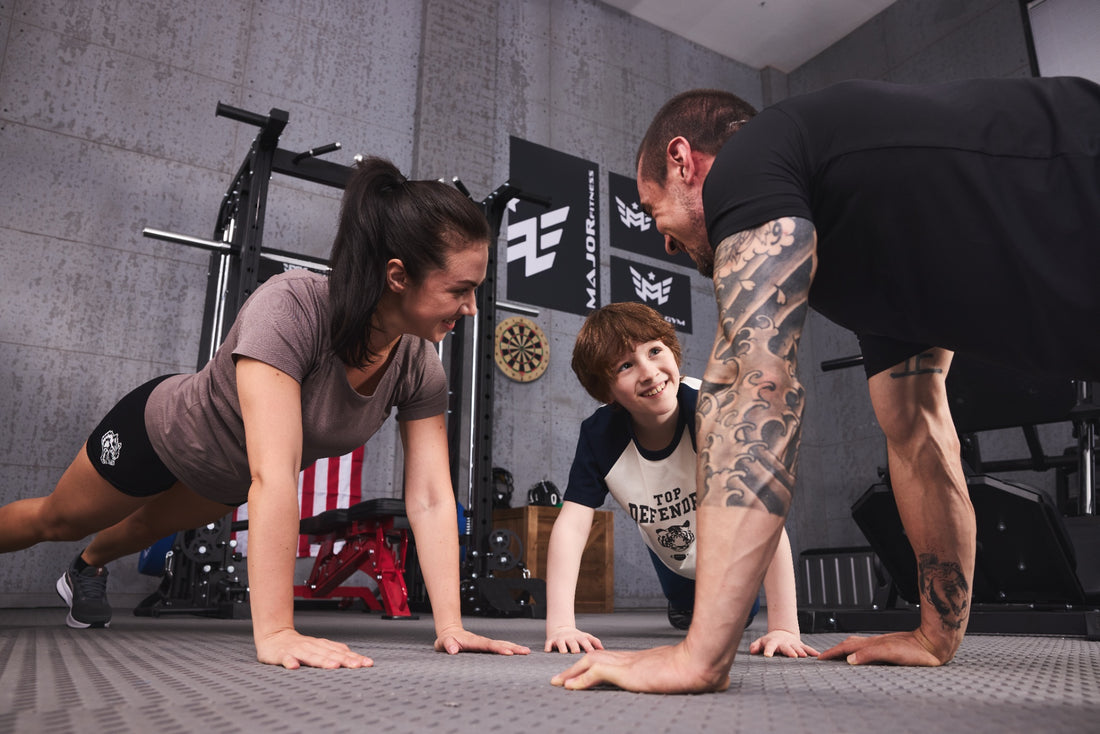
Are you looking to master the push-up and add this classic exercise to your fitness routine? Whether you’re just starting out with bodyweight exercises or trying to regain your strength, learning how to build up to a push-up can be a rewarding journey. Read on to discover a step-by-step guide that will take you from beginner to push-up pro!
Introduction: Why Push-Ups Are Essential
Push-ups are one of the most fundamental bodyweight exercises that can be performed virtually anywhere with no equipment required. They target multiple muscle groups, including the chest, shoulders, triceps, and core, making them an efficient and effective addition to any workout routine. However, they can be daunting for beginners. This guide breaks down the process, offering manageable steps, tips, and modifications to help anyone build up to a full push-up.
Step 1: Assess Your Starting Point
The first step in learning how to build up to a push-up is to assess your current fitness level. Before diving into the exercise, ensure you have a baseline understanding of your upper body and core strength. You can do this by attempting a wall push-up:
- Stand facing a wall and place your hands on it, shoulder-width apart and at chest level.
- Step back slightly and incline your body towards the wall.
- Bend your elbows slowly, bringing your chest towards the wall.
- Push back to the starting position.
Step 2: Strengthen Your Core
A strong core is crucial for proper push-up form. Incorporate core-strengthening exercises such as planks and dead bugs into your routine:
- Plank: Hold a plank position, maintaining a straight line from head to heels, for 30 seconds to 1 minute per set. Focus on engaging your core and keeping your hips level.
- Dead Bug: Lie on your back with your arms extended upwards and your knees bent at 90 degrees. Slowly lower one arm and the opposite leg towards the floor while keeping your lower back pressed into the ground. Return to the starting position and switch sides.
Step 3: Use Modified Push-Ups
Once you're comfortable with wall push-ups, it's time to progress to modified versions of the exercise. Two popular modifications are knee push-ups and incline push-ups.
- Knee Push-Up: Start in a plank position with your knees on the ground. Lower your chest towards the floor while keeping your body in a straight line from head to knees, then push back up.
- Incline Push-Up: Place your hands on an elevated surface like a bench or sturdy table, and perform a push-up. The higher the surface, the easier the exercise will be. Gradually lower the height as you build strength.
Step 4: Focus on Form
Proper form is essential for maximizing the benefits and avoiding injury while performing push-ups. Keep these key points in mind:
- Hands should be placed slightly wider than shoulder-width apart, fingers pointing forward.
- Engage your core by pulling your belly button towards your spine.
- Maintain a straight line from your head to your heels, avoiding sagging hips or rounded shoulders.
- Lower your body with control, aiming to have your chest touch the floor while keeping your elbows at a 45-degree angle to your torso.
- Push back up with the same control to the starting position.
Practicing with correct form can make all the difference as you strive to build up to a full push-up.

Step 5: Gradually Increase Repetitions
The key to progress is gradual improvement. Start with a goal of performing modified push-ups in sets of 5-10 repetitions. As you get comfortable, increase the number of repetitions and sets. Consistency is crucial; aim to do push-ups 2-3 times a week, giving your muscles time to recover between sessions.
Step 6: Transition to Full Push-Ups
Once you can comfortably perform multiple sets of knee or incline push-ups with correct form, you’re ready to attempt a full push-up:
- Start in a high plank position with hands placed shoulder-width apart.
- Lower your body to the floor, maintaining a straight line from head to heels.
- Push back up to the starting position.
Step 7: Track Your Progress
Keeping a workout journal can help you monitor your progress and stay motivated. Record the number of push-ups you do, the type, and any notes on form or difficulty. Adjust your routine as needed to keep challenging yourself.
Conclusion: The Road to Mastery
Learning how to build up to a push-up is a worthwhile endeavor that requires patience, consistency, and determination. Start with assessing your current fitness level, strengthen your core, gradually progress through modified versions, and always focus on maintaining proper form. With time and effort, you'll soon be able to perform full push-ups confidently and incorporate them into your regular fitness regime. Happy pushing!




















